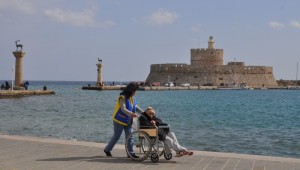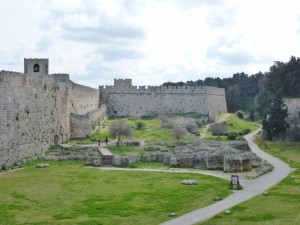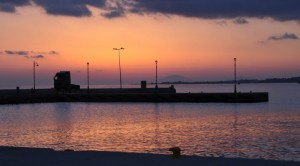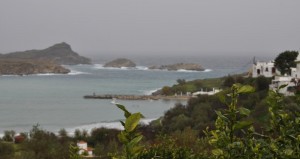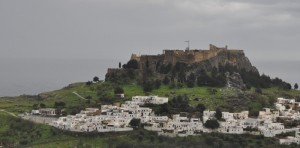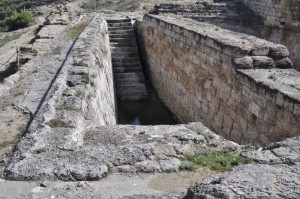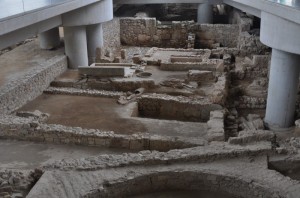Rhodes-Athens March 2-5
March 2 Saturday: Kos – Rhodes
Rhodes (also known as the isle of the Sun) has a long and rich history. Measuring 79.7km long and 38km wide, Rhodes is the largest island in the Dodecanese with an area of1408 square kilometres and a population of over 115,000 inhabitants. The highest mountain is Atavyros at 1215m.
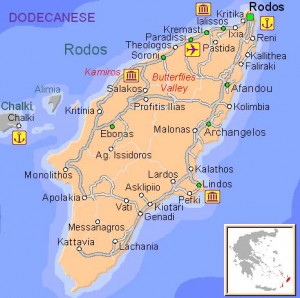 The island was inhabited in the Neolithic period. The Dorians who arrived in the 8th century BC built three important cities in Lindos, Ialyssos and Kameriors, the ruins of which are World Heritage properties. The Persians once invaded the island but were defeated by forces from Athens in 478 BC. In 408 BC the cities united to form one territory and they built the city of Rhodes.
The island was inhabited in the Neolithic period. The Dorians who arrived in the 8th century BC built three important cities in Lindos, Ialyssos and Kameriors, the ruins of which are World Heritage properties. The Persians once invaded the island but were defeated by forces from Athens in 478 BC. In 408 BC the cities united to form one territory and they built the city of Rhodes.
The city of Rhodes developed into a maritime, commercial and cultural centre by 3rd century BC. The Colossus of Rhodes (280 BC) which was documented as a giant bronze statue standing at the harbour and one of the Seven Wonders of the Ancient World was destroyed by earthquake in 226 BC.
In the 1st century AD, Roman Emperor Tiberius spent a brief term of exile on Rhodes. St Paul brought Christianity to Rhodes which reached her zenith in the 3rd century. Then the island came under the Byzantine Empire. In 654, the island was occupied by the Umayyad forces that carried off the remains of the Colossus of Rhodes. In 715, the Byzantine fleet launched a rebellion and recaptured the island. The Byzantine era was ended in 1309 when the island was occupied by forces of the Knights. The city became a city of power and was rebuilt into a model of the European medieval ideal. The island fell to the army of Suleiman the Magnificent in December 1552 when the few surviving Knights retired first to the Kingdom of Sicily and later Malta.
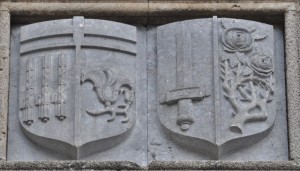 |
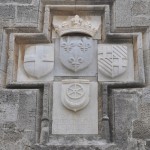 |
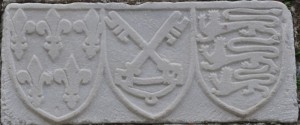 |
Rhodes was under the Ottoman rule for the next four hundred years till Italy seized the island in 1912 during the Italian-Turkish War. In 1947, Rhodes together with other islands of the Dodecanese was united with Greece.
I left Kos after 7:30am and arrived in Rhodes four hours later. The journey was pleasant and I had full views of the beautiful Turkish coast. I got excited when sighting the imposing medieval fortifications and the Palace of the Grand Master (the Palace) which dominate the skyline of the city of Rhodes. The citadel was first built at the end of the Byzantine period around 7th c. The Knights repaired it the 14thcentury and converted it into the residence of the Grand Master and the administrative centre.
I stayed in the City Centre Hotel opposite the Casino. I had to walk through the old town which is a World Heritage Site before reaching my hotel. What a pleasant introduction to this amazing old city.
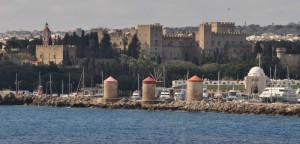 |
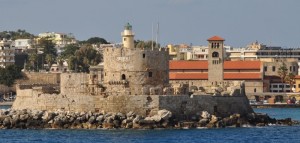 |
As it was Saturday, the tourist office was closed. I spent the afternoon strolling in the old city though I did not have a good map. The Palace and the Clock Tower are landmarks and the signage is good. There are also excellent explanations on each building/monument.
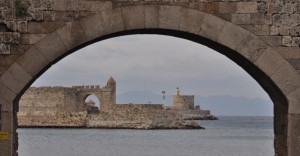 |
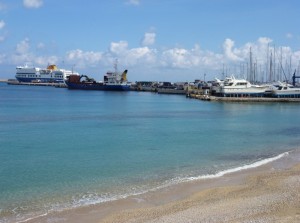 |
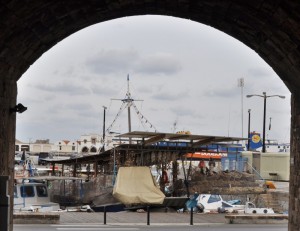 |
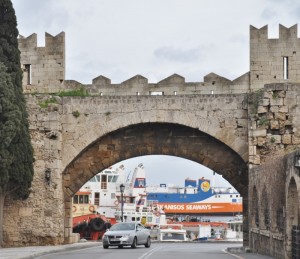 |
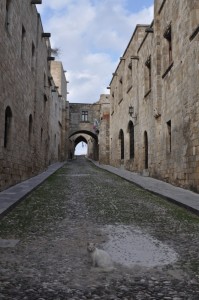 |
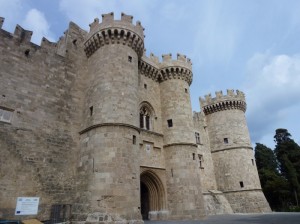 |
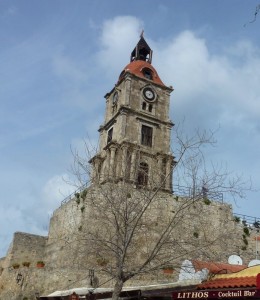 |
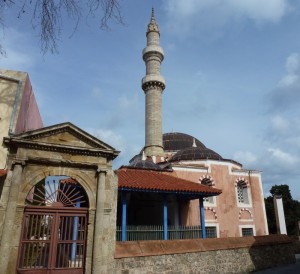 |
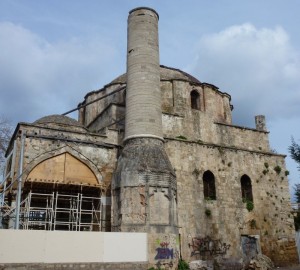 |
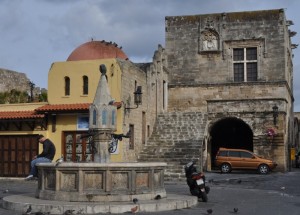 |
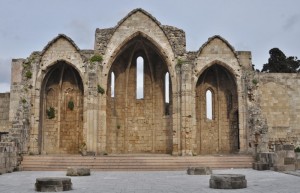 |
When I tried to buy a ticket to the Palace, the attendant advised me to come back the following day to see the exhibits for free. Hence, I spent the next three hours strolling aimlessly which is the best way to soak in the atmosphere and appreciate the beauty of the old city. Locals still live inside the citadel. While some dwellings are well preserved, many are dilapidated. A few monuments are under repair with funding from the EU.
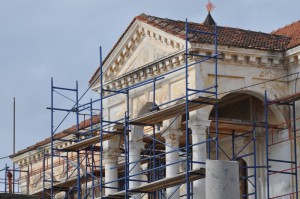 |
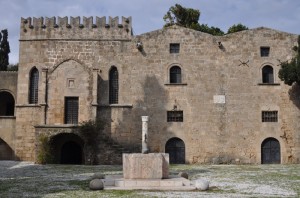 |
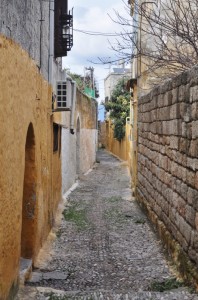 |
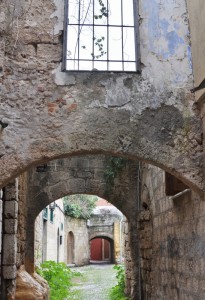 |
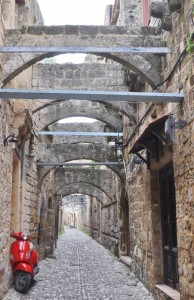 |
The most impressive monuments/buildings are the medieval walls and fortifications, the Palace and the “Street of the Knights” (Ippoton) stretching from the Palace to Great Alexandra Square hosting the inns of Provence, Spain, France and Italy. I have taken many pictures but none of them can capture the beauty and serene atmosphere of the Street of the Knights. Other key attractions include the Clock Tower, Mosque of Suleiman, Ottoman Library, Hippocratous Square, Castellania (1597) which served at the Knights’ criminal court, the Jewish Martyrs Square and the Bastion of St Nicholas at the entrance to the harbour.
Almost all the shops and restaurants were closed. But I enjoyed the tranquility and watching local residents cycling or walking by. The back lanes are most enticing: I never get tired of zigzagging through the lanes and peeping at the colourful houses and gardens. The toy-like gates and medieval walls are picturesque. I returned to the hotel before 6pm.
March 3 Sunday: Rhodes
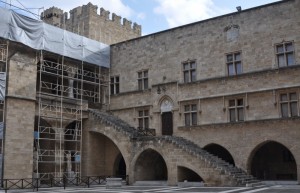 |
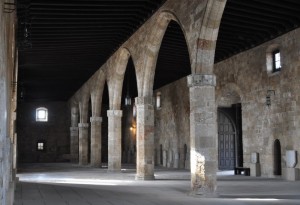 |
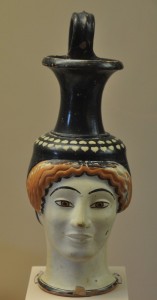 |
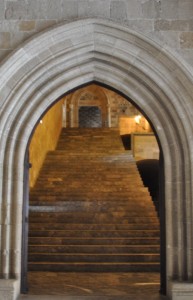 |
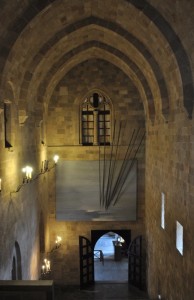 |
I visited the Palace and the Archaeological Museum before heading to Lindos. The Palace (80x75m) is built at the highest point of the medieval city. Its strong structure was linked with fortifications. During the period of the Turkish rule, the Palace was used as a prison. Italians during their occupation of the island decided to restore the building. The buildings and the mosaic floors mostly from Kos are the only two things I find most impressive and interesting.
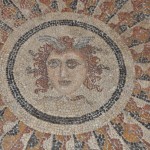 |
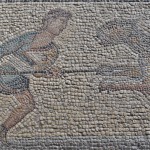 |
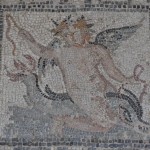 |
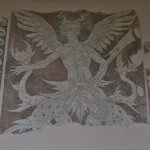 |
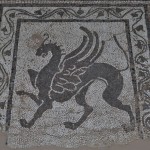 |
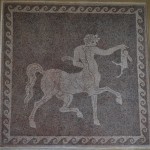 |
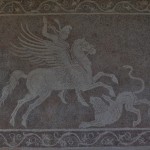 |
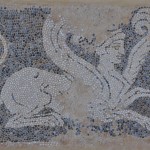 |
I rushed to the bus station thinking the bus to Lindos, 55km from the city would be leaving at 10:30am. I was wrong: as it was Sunday, there was no bus at 10:30am. I had to wait for another hour! The journey took an hour and a half. The route is scenic with beautiful mountains, green valleys, small villages, many natural bays and beaches.
The sky darkened and torrential rain, lightning and thunder came before I arrived in Lindos. I had no umbrella and had to take shelter in a café by the bus stop. Three elderly gentlemen in the café looked at me as though I came from Mars. They asked me a lot of questions. I told them developments in Hong Kong since 1997. They complained about the Greek government and the economy and were surprised to know the economy in China and Hong Kong was doing well despite the global financial crisis.
As the last bus would be leaving at 2:30pm, I decided to walk to the fortress despite the heavy rain and ghastly wind. My Greek friends were horrified. I asked the café attendant to give me a big litter bag and turned it into a poncho.
Lindos had played a leading role in the Greek colonization movement and reached her golden age during the Archaic period (7th-6th c. BC). The acropolis was used as a fortress in antiquity. It took me less than ten minutes to reach the fortress. As no one was around at the entrance gate, I slipped in and made my way to the stairway leading to the fortress. At the top of the stairway, I could see the administration buildings of the Knights and the remains of the Byzantine church of Ayios Ioannia. But the relentless rain, horrifying thunders and lightning stopped my adventure. On my way out, I saw a lady inside the entrance gate booth. She was surprised to see me as she was about to close the gate thinking no one was inside the fortress. Wow, I might have been locked up in the fortress!
Once I got on the bus, the rained stopped and blue sky reappeared. It’s fate! I got back to the city at 4pm, went straight to a good Greek fish restaurant near my hotel and rewarded myself with had a seafood lunch-cum-dinner. I paid €I8 for a starter (fried fish), a main course (lamb stew) and a glass of wine. Not bad!
March 4 Monday: Rhodes
In order to reach Kamiros, I had to take a bus to Kalavarda and then walk about an hour to reach the site on a hill top. Though the museum would be closed, I could still poke my head around to get an idea of the environment and setting of this vibrant city in its heydays.
Kamiros had retained its rural character throughout antiquity. There was settlement as early as the Archaic period. I can see typical ruins of a Hellenistic city including the urban layout and design. The archaeological site consists of three levels. In the lowest level, there are ruins of a Doric temple (late 3rd –early 2nd century BC), fountain and a kind of agora. The second level was mainly for private dwellings. An acropolis was located at the upper level with a sacred precinct of Athena Kamiras, a stoa and an impressive cistern dating 6-5th century BC.
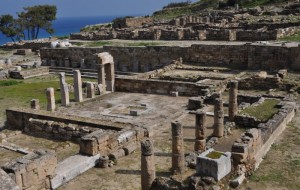 |
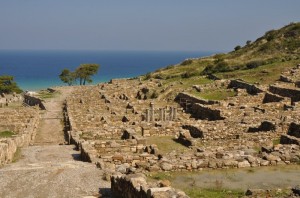 |
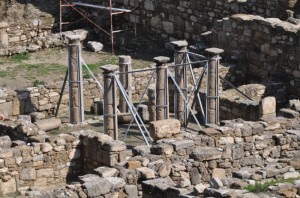 |
My trip to Kamiros was filled with pleasant surprises. I took the 9:15am bus and arrived at Kamiros around 10:50m. I was surprised to see the wilderness in this part of the island. I found a few workers in the site and the gate was opened. I ventured in and the lady at the entrance gate booth told me the site was closed. As she knew I would be leaving the following day and my keen interest, she made an exception and allowed me to visit the site. I fully appreciate her understanding and warm personality.
I thought the next bus would be leaving at 12:30pm. After the bitter lesson in Kos, I decided to reach the bus stop as early as possible. I was surprised to see the bus coming at 12:15pm till another passenger showed me the timetable. I was indeed lucky. Had I missed this bus, I had to wait till 2:30pm!
I was back in the city at 1pm and spent the afternoon strolling in the Hill of Montle Smith (behind the city) and the old city. Up in the hill, I found a huge and well preserved stadium (3rd or 2nd c. BC), the ancient acropolis of Rhodes with ruins of Pythian Apollo and parts of temples of Athena Polias and Zeus.
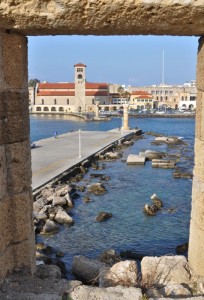 |
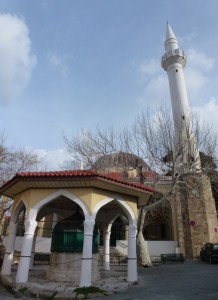 |
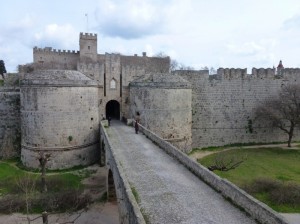 |
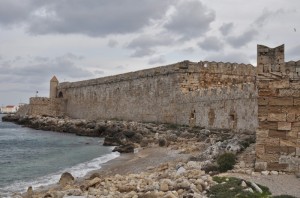 |
The weather was perfect around 20°C: sunny and cool. I returned to the medieval city for the last time to complete the 3-km long moat walk (between the outer and inner walls). Inside the old city, some restaurant owners were setting up tables and chairs and decoration workers were busy in a few shops in the main square I was glad to see life making a slow come-back to the city.
I had dinner in the same restaurant but found the lamb too salty. On my way to the hotel, I stopped at the casino which was closed till 5pm. But once I had settled in my room, I had no desire to make a special trip though it is just opposite the hotel.
March 5 Tuesday: Rhodes – Athens, Greece – Bucharest, Romania
I got up at 4am and took the 4:45am bus to the airport. I should have taken the bus at 5:30am as my plane departed at 6:50am. I arrived in Athens at 7:30am. My original plan was to leave my suitcase and a backpack at the airport. I dropped my plan on knowing that the airport charges €6 euro per piece. Exorbitant charge!
I took a bus to Syntagma Square to see the travel agent in order to get a refund of €50 for the accommodation I had paid in Patmos. I also left my luggage with the agent thus saving €12.
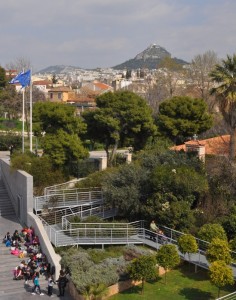 |
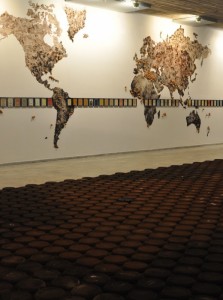 |
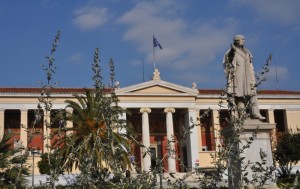 |
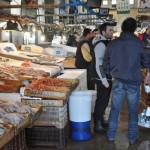 |
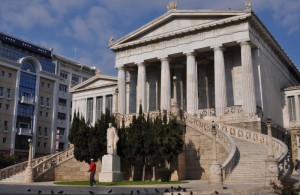 |
Time passed very quickly. I could not remember whether I had visited the old Acropolis Museum in the 80s. But the new Museum is impressive and awesome. The next stop would be the Benaki Museum and the Museum on Cycladic and Ancient Greek Art both of which are located near the Syntagma Square. But both were closed on Tuesday. I stopped by a small museum in the area and saw a special exhibition on contemporary art by a Greek artist (I forget his name and the only thing I remember is his absurd project named “Concealment” where he digs a hole to hide one of his works in dozens of places in the world!
Before heading back to the airport, I spent a few hours walking in downtown Athens. I am amazed to find the back streets between the Omnia Square and the Monasteri Square resembling a Middle East neighbourhood. Some Chinese shops are selling cheap stuff. Suddenly I had the feeling that this would be an area to avoid around after dark!
Before leaving Plaka, I saw George of Academy Travel who refunded me €50. But when I requested compensation for the poor standard of the hotel in Kos and no provision of breakfast, he ignored my request. The Tarom flight took off at 9pm and I arrived in Bucharest at 10:30pm.
Remarks (to be added later)


